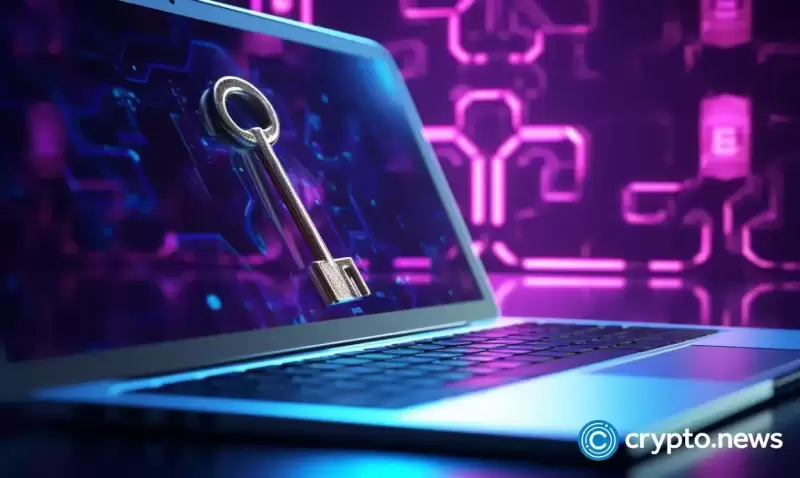 |
|
 |
|
 |
|
 |
|
 |
|
 |
|
 |
|
 |
|
 |
|
 |
|
 |
|
 |
|
 |
|
 |
|
 |
|
暗号通貨のニュース記事
プロジェクト11は、Shorのアルゴリズムを使用してBitcoin ECCキーの一部を破る最初のチームへのQ-Day Prize Competitionを発表します
2025/04/18 03:41
Quantum Computing Research CompanyであるProject 11は、2025年4月16日にQ-Day Prizeというタイトルの競争を発表しました。

Project 11, a quantum computing research company, announced a competition titled the Q-Day Prize on April 16. To win, participants must break the largest portion of a toy version of Bitcoin’s ECC key using Shor’s algorithm on a quantum computer. The deadline is April 5, 2026. The prize: 1 BTC.
Quantum Computing Research CompanyであるProject 11は、4月16日にQ-Day Prizeというタイトルの競争を発表しました。勝つために、参加者は、量子コンピューターのShorのアルゴリズムを使用してBitcoinのECCキーの玩具バージョンの大部分を破らなければなりません。締め切りは2026年4月5日です。賞:1 BTC。
The mission behind the competition
競争の背後にあるミッション
According to researchers, quantum computers will be capable of instantly solving tasks that modern-day computers would need 47 years to complete. Such computational power is widely seen as a threat to cryptocurrency networks, as they would be able to brute-force encrypted data. Bitcoin (BTC) and Ethereum (ETH) are especially vulnerable, newer coins were made with quantum resistance in mind.
研究者によると、量子コンピューターは、現代のコンピューターが完了するのに47年かかるタスクを即座に解くことができます。このような計算能力は、暗号通貨ネットワークに対する脅威として広く見られています。これは、暗号化されたデータをブルートフォースすることができるためです。ビットコイン(BTC)とイーサリアム(ETH)は特に脆弱であり、量子抵抗を念頭に置いて新しいコインが作られました。
Although some see the contest as a threat to Bitcoin’s security, Project 11 claims the real mission is to avoid future security breaches associated with quantum computing progress, estimate the risks, and take proper action to respond to the threat in time.
一部の人は、このコンテストをビットコインのセキュリティに対する脅威と見なしていますが、プロジェクト11は、量子コンピューティングの進捗に関連する将来のセキュリティ侵害を回避し、リスクを推定し、時間内に脅威に対応するために適切な行動をとることであると主張しています。
10 million+ addresses have exposed public keys.Quantum computing is steadily progressing.Nobody has rigorously benchmarked this threat yet.
1,000万人以上の住所が公開キーを公開しています。quantumコンピューティングは着実に進行しています。
As Project 11 puts it in the announcement on the company’s X account, the mission is to protect six million bitcoins. Project 11 explains that currently, Bitcoin’s security heavily relies on elliptic curve cryptography, allegedly vulnerable to quantum computers running Shor’s algorithm. Breaking this protection is a question of time. The idea behind the competition is to benchmark this threat and get practical data to work with in creating solutions that will protect the Bitcoin network from quantum computers.
Project 11が会社のXアカウントの発表に掲載しているため、ミッションは600万のビットコインを保護することです。 Project 11は、現在、Bitcoinのセキュリティは、Shorのアルゴリズムを実行している量子コンピューターに対して脆弱であると言われる楕円曲線暗号化に大きく依存していると説明しています。この保護を破ることは時間の問題です。競争の背後にあるアイデアは、この脅威をベンチマークし、量子コンピューターからビットコインネットワークを保護するソリューションを作成する際に実用的なデータを取得することです。
According to the conditions list, Project 11 does not anticipate that someone will break the entire Bitcoin key. The company urges competitors to try to break small portions of the 256-bit key. Project 11 offers toy keys from 1 to 25 bits in length. As the company puts it, even breaking a 3-bit key would be big news.
条件リストによると、Project 11は、誰かがビットコインキー全体を破るとは予想していません。同社は、競合他社に256ビットキーの小さな部分を破ろうとするよう促しています。プロジェクト11は、長さが1〜25ビットのおもちゃの鍵を提供しています。会社が述べているように、3ビットキーを破ることでさえ大きなニュースになるでしょう。
Importance for transparency
透明性の重要性
Project 11 emphasizes the need for transparent stress testing, open to all, to provide an honest and clear picture of how real the quantum threat is.
プロジェクト11は、量子の脅威がどれほど現実的であるかを正直で明確な絵を提供するために、すべての人に開かれた透明なストレステストの必要性を強調しています。
Here’s what the company itself says on the matter:
これが会社自体がこの問題について言っていることです:
“Quantum computing is advancing fast, and the impact on cryptography is inevitable. Instead of waiting for breakthroughs to happen behind closed doors, we believe in facing this challenge head-on in a transparent and rigorous manner.
「量子コンピューティングは急速に進歩しており、暗号化への影響は避けられません。ブレークスルーが密室で起こるのを待つのではなく、この挑戦に真正面から透明で厳格な方法で直面することを信じています。
The QDay Prize is about testing real quantum capabilities, staking out the frontier of cryptanalysis, and ensuring the world is ready for what comes next. The future of cryptography depends on it.”
QDAY賞は、実際の量子能力をテストし、暗号化のフロンティアを染み込ませ、次に来るものの準備ができていることを確認することです。暗号化の未来はそれに依存しています。」
Awarding people for cracking Bitcoin key cryptography is also a bold move that may increase awareness about the quantum computing threat to Bitcoin, as not everyone in the community knows about it, and many downplay this danger.
ビットコインの重要な暗号化をクラックするために人々を授与することは、コミュニティの全員がそれについて知っているわけではなく、多くの人がこの危険を軽視するように、ビットコインに対する量子コンピューティングの脅威についての認識を高める可能性のある大胆な動きでもあります。
Transparency of the competition will ensure the threat is real and not something made up. Thanks to the submitted task solutions being visible to everyone, the threat may become auditable and reminiscent of open-source software in this regard.
競争の透明性は、脅威が現実的であり、構成されたものではないことを保証します。提出されたタスクソリューションがすべての人に表示されるおかげで、この点に関して脅威は監査可能になり、オープンソースソフトウェアを連想させる可能性があります。
How real is the quantum computing threat?
量子コンピューティングの脅威はどれほどリアルですか?
Project 11 notes that no one has ever managed to break any ECC key used in real-life cryptography, either via classical methods or quantum computing. Nevertheless, quantum computing keeps evolving, and the threat is real. The Project 11 website mentions that the National Institute of Standards and Technology (NIST) is actively transitioning to post-quantum cryptography (PQC), as widely adopted ECC is considered vulnerable to potential quantum attacks. Several brands of wallets now promote themselves as quantum-resistant ledgers.
プロジェクト11は、古典的な方法または量子コンピューティングを介して、実際の暗号化で使用されているECCキーを破ることができなかったことに注意してください。それにもかかわらず、量子コンピューティングは進化を続け、脅威は現実です。プロジェクト11のウェブサイトは、国立標準技術研究所(NIST)は、広く採用されたECCが潜在的な量子攻撃に対して脆弱であると考えられているため、Quantum後の暗号(PQC)に積極的に移行していると述べています。現在、いくつかのブランドの財布は、量子耐性元帳として自分自身を促進しています。
According to existing estimations, a quantum computer needs to reach 2,000 qubits to break ECC keys. Currently, various companies work on quantum chips. Yet, their capacity is far beyond the 2,000 qubits. For instance, Google’s Willow chip reaches 105 qubits. IBM’s Heron is more powerful, with 150 qubits. QuEra is a quantum computing-focused company. Its analog quantum computer allegedly reaches the 256 qubits mark.
既存の推定によると、量子コンピューターはECCキーを破るために2,000キュビットに到達する必要があります。現在、さまざまな企業が量子チップに取り組んでいます。しかし、それらの能力は2,000キュビットをはるかに超えています。たとえば、GoogleのWillowチップは105キュビットに達します。 IBMのヘロンはより強力で、150のQubitsです。 Queraは量子コンピューティング中心の会社です。そのアナログ量子コンピューターは、256キュビットマークに達したと言われています。
Various prominent experts and professionals in the cryptocurrency community have voiced their concerns about the potential dangers of quantum computation for Bitcoin.
暗号通貨コミュニティのさまざまな著名な専門家や専門家は、ビットコインの量子計算の潜在的な危険性についての懸念を表明しています。
Opinions
意見
Tether CEO Paolo Ardoino took to X to convey his optimistic stance on the future of Bitcoin in the quantum computing era. He seemingly doesn’t doubt that quantum computers will eventually crack the ECC key. By that time, a solution will already have been made, and all Bitcoin owners will have moved their assets to quantum-resistant addresses. The “lost wallets,” including Satoshi’s addresses, will be hacked, and those coins will enter circulation.
Tether CEOのPaolo Ardoinoは、量子コンピューティング時代のビットコインの将来についての彼の楽観的な姿勢を伝えるためにXに連れて行きました。彼は、Quantum Computersが最終的にECCキーをクラックすることを疑っていないようです。その時までに、ソリューションはすでに行われており、すべてのビットコインの所有者は資産を量子耐性アドレスに移動しました。サトシの住所を含む「失われたウォレット」はハッキングされ、それらのコインは循環に入ります。
John Lilic of Telos Blockchain outlines the opposite side of the quantum computer use case. He points out that they can be used not to loot crypto from wallets with lost keys but to give legitimate owners an opportunity to regain access to their locked bitcoins.
TelosブロックチェーンのJohn Lilicは、量子コンピューターのユースケースの反対側の概要を説明しています。彼は、失われた鍵を備えた財布から暗号を略奪するのではなく、合法的な所有者にロックされたビットコインへのアクセスを取り戻す機会を与えるために使用できると指摘しています。
This is just the start
これはほんの始まりです
免責事項:info@kdj.com
提供される情報は取引に関するアドバイスではありません。 kdj.com は、この記事で提供される情報に基づいて行われた投資に対して一切の責任を負いません。暗号通貨は変動性が高いため、十分な調査を行った上で慎重に投資することを強くお勧めします。
このウェブサイトで使用されているコンテンツが著作権を侵害していると思われる場合は、直ちに当社 (info@kdj.com) までご連絡ください。速やかに削除させていただきます。




























































